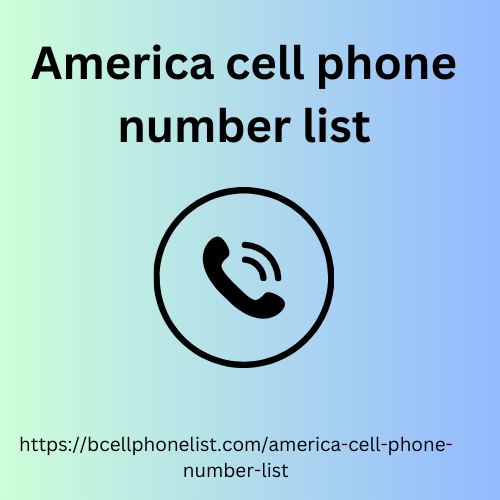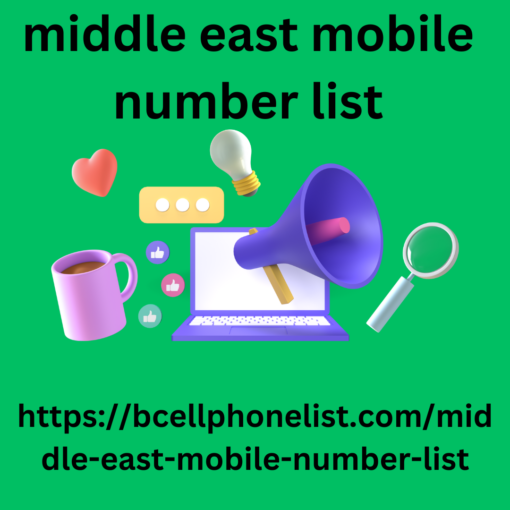are a great tool for solving various marketing tasks. In this case study, we will look at three different series of targeted emails created for specific purposes using different approaches to segmentation and personalization. The campaigns pursue different goals: engaging new users, reactivating inactive readers, and collecting valuable product feedback.
Targeted Email Group #1: New User Engagement Stripo
Marketing goal: at the first stages of interaction with the product, attracting new users and retaining them at the initial stages of using the product.
In particular, it is important to help those America cell phone number list who have started to create their first letter but have not finished editing it. The main marketing goal of these letters is to make sure that the user continues to work with the product and finishes creating their first letter. This is very important, because on average, if a user does not create a letter within the first 7-10 days, the likelihood that they will remain active is significantly reduced.
Letters from this group
Each user for whom our system has received confirmation of an event indicating that they started composing an email but did not finish it receives one email. We continually test this email with four variations to determine the most effective approach.
1. The first version of the letter directly addresses the user with the message: “We saw that you started creating your first letter, but did not finish it. Let us help you!” The letter provides a full guide on how to work with the editor, including screenshots and examples. The user is also offered to order a ready-made template from our designers or schedule a meeting with the support service to resolve any issues that may arise.
2. The second version of the letter is similar in content, but it has a short questionnaire attached. We ask the user to fill it out to understand what exactly is preventing him from completing the letter.
(Source: Letter from Stripo)
3. The third version is a personalized letter from our CEO Dmitry Kudrenko. It says that he noticed some difficulties with the user and is ready to help. The letter also contains a guide on how to work with the editor, but it is sent on behalf of the CEO.
(Source: Letter from Stripo)
4. The fourth version is also a personalized letter from the CEO, but in plain text format. This format imitates a simple, unobtrusive text letter that looks less formal than block letters.
Results of targeted emails for user retention
Using these emails, we have achieved consistent results. Open rates range from 35% to 42%, and click-to-open rates range from 3% to 5%. This has helped significantly increase the number of users who complete their first email, increasing the likelihood that they will remain active Stripo customers.
Targeted Email Group #2: Reactivating Inactive Readers
Marketing goal: constant hygiene of the reader list and reactivation of inactive users.
Keeping our contact list clean is very important for our mailing lists, particularly for reactivating those who have stopped interacting with our emails. This is not just a formal process; it helps maintain a high domain reputation and ensures that our emails end up in the primary mailbox and not in the spam folder. The main marketing goal of this chain is to separate inactive users from active ones, ensuring that our emails are sent only to those who are genuinely intereste in their content.
Structure of a series of letters
This automate chain consists of three emails. One of them changes depending on the season, and the other two are evergreen, suitable for any time.
The first letter is sent to subscribers who last opene our letters a long time ago. The following letters are sent only to those who have not read the previous ones.
1. The first email is dedicated to a variety of interesting content that can be used without being tied to our product. This could be a marketing calendar, crash tests, white papers, e-books, or email reviews. The main goal is to interest the user so that he wants to interact with the content.
(Source: Letter from Stripo)
2. The second letter uses situational content that changes depending on the season. For example, now this letter is about getting ready for school, Halloween is coming soon, and so on. In addition, the newsletter contains letter templates that the user can pay attention to.
3. The third letter is the last attempt to interest the subscriber. If he does not respond to the previous letters, we offer him to fill out a short form where he can explain why he is not interested in the newsletter. After that, the subscriber automatically unsubscribes and goes to the inactive segment.
Results of subscriber reactivation using a targeted email series
Here are the results we got for each of the letters:
With this series of emails, we have achieved an important result: about 30% of users who initially did not interact with our emails became active again after the first email . Another 15% are adde after the next iteration. This strategy allows us to keep our reader list clean, maintain a high domain reputation, and ensure maximum effectiveness of our mailings.
Targeted Email Group #3: Survey to Collect Valuable Product Feedback
Marketing objective: research to improve the functionality of modules in Stripo
At Stripo, we are constantly working to improve our products based on user needs. Monitoring user behavior through analytics and best ai paper writers with references asking them about their experience with the functionality is very important. To this end, we conducted a survey of those who actively use . This initiative allowed us to identify critical issues that hinder the effective use of our tools and find ways to solve them.
Our marketing goal for this targeted email was to conduct an in-depth study of how users interact with modules in the Stripo editor. We need to gather their opinions on what they are missing, why they use modules the way they do, and what could be improve.
Letter with survey form
This campaign was carrie out manually and included a single email in which we reached out to users who were actively using modules in the Stripo editor and invite them to participate in a survey. What was unique about this email was that we focused on the segment of users who had already used the functionality of the modules in the last 30 days (excluding those who had just signed up), which allowed us to collect the necessary information to further improve the product.
(Source: Letter from Stripo)
we asked what hinders users from working with modules, what they are missing, and what they see as the ideal improvement of this functionality. Obtaining specific insights and suggestions was necessary for better understanding of user needs and planning further development of the functionality.
Results of targeted email campaigns
The open rate was 34.4%, and we collected cn numbers about 120 relevant responses. This data became the basis for further discussions with the development team. User feedback allowed us to improve the search functionality in the module library and the naming scheme for custom modules.
We also found that users really wanted a separate workspace for working with modules. This allowed us to prioritize the work on creating a full-fledged area for working with modules, similar to the functionality of working with templates.
Overall, this survey helpe us understand what users were worrie about and provide insights that helpe shape our plans to improve modules in Stripo.
In conclusion
Email marketing should be an attractive and effective tool for interacting with users. The Stripo team is actively working on creating targeted emails that help retain new users and collect valuable data for product development.
Here are the life hacks we got as a result of this work:
- Focus on users – Understanding user needs and behavior is key to creating effective email campaigns. Consider customer feedback.
- Testing options – Regularly testing different approaches and email formats will help you find the most effective solutions for user retention and engagement.
- Develop analytics – Use surveys to gather user insights to improve product functionality that customers want.




